




The application of nutrients, or fertilisers, that plants require is an important component in primary production operations For numerous reasons, crops or pastures, may not naturally get all the nutrients they need from the soil in order to perform well The considered application of fertiliser is often necessary to meet the desired outcomes of enterprise programs
More than ever, there is both an economic and environmental imperative to make nutrient applications as efficient and effective as possible It is important that growers understand how to determine soil and/or plant nutrient status with appropriate testing and make well informed decisions around fertiliser application in order to get good results and lower costs.
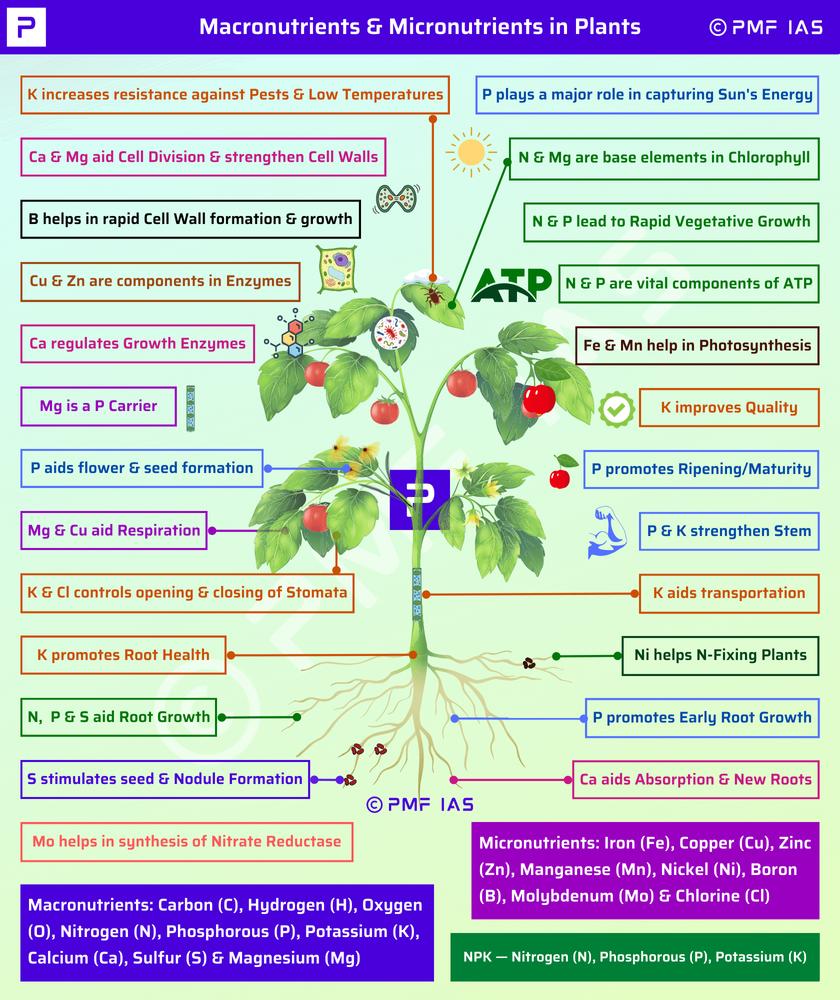
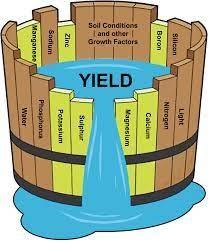
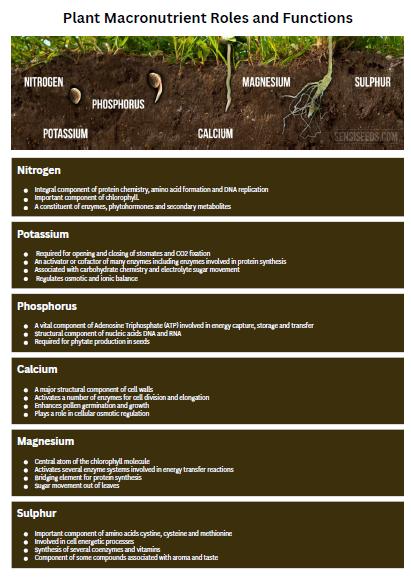
Plant Nutrient Uptake: Plants take up most of the nutrients they need through their roots from the soil environment
They acquire these nutrients in varying degrees from the soil solution, clay/humus exchange sites, soil biology, the breakdown of organic materials and the surfaces of soil mineral particles
It used to be thought that plants only take up ionic nutrients in solution but it is now known that plants can take up whole molecules, complete compounds like amino acids and proteins and even bacterial cells
Plants can also absorb a small amount of nutrients from gases, solutions, organic sources and dusts above the ground, through their leaves, stems and reproductive organs


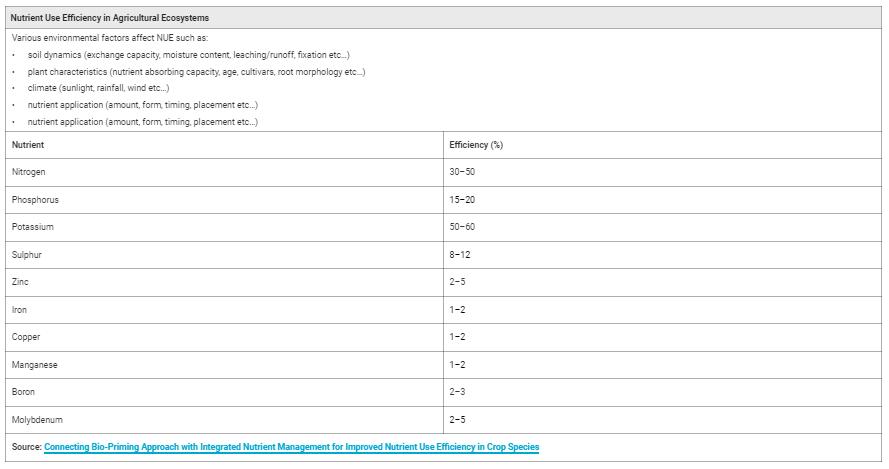
The application of nutrients has the potential to significantly improve, but can also adversely affect, production outcomes, depending on the context, type of fertilisers, amounts used and methods of application
It is important that growers understand how to determine soil and/or plant nutrient status with appropriate methods and make well informed decisions around fertiliser application in order to get desired results, lower costs and prevent ecological issues
There are a range of methods that can be used to determine the status of your soil or plants to inform the decision-making process around nutrient applications that can be made to improve plant nutrition and minimise waste.
At any one time there are pools of soil nutrients: dissolved in the soil solution held on exchangeable sites within soil organisms within organic matter locked up in the soil mineral matrix
These pools of nutrients are in a state of flux Nutrients are constantly being removed from the soil solution and exchange sites by plants, released from organic matter and liberated from the soil mineral matrix by soil microbes and so on
Variables such as soil moisture, temperature, cation exchange capacity (CEC), phosphorous buffering index (PBI), acidity/alkalinity (pH) redox state (Eh) and soil carbon levels also significantly influence the state and place nutrients occupy in the soil and their plant availability
Soil testing methodologies are designed to identify significant soil characteristics and the levels of essential nutrients in the different soil fractions These are then interpreted in relation to plant nutrient availability
Soil characteristics such as pH, moisture, colour, texture and structure, can be visually observed or tested in the field but these only provide general indication of soil fertility
To obtain more comprehensive information, soil samples can be sent to certified laboratories that offer test packages that cover a range of different parameters
Things to consider when collecting soil samples for testing:
Accounting for isolating different soils
Depth of sampling
Accurate cross section/representation
Avoiding sites of potential contamination
Adequate volume of soil
Seasonal conditions
Handling & Storage


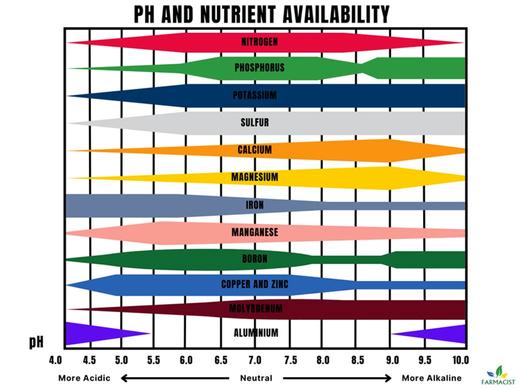

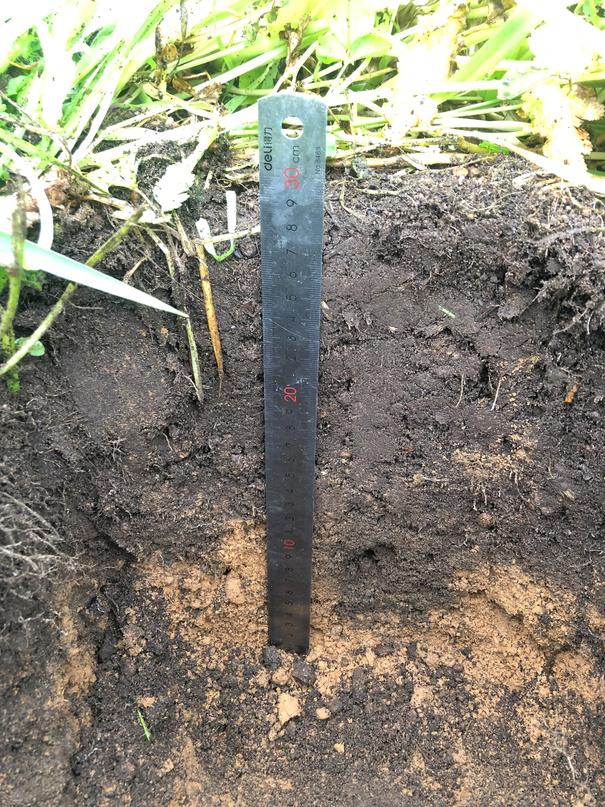
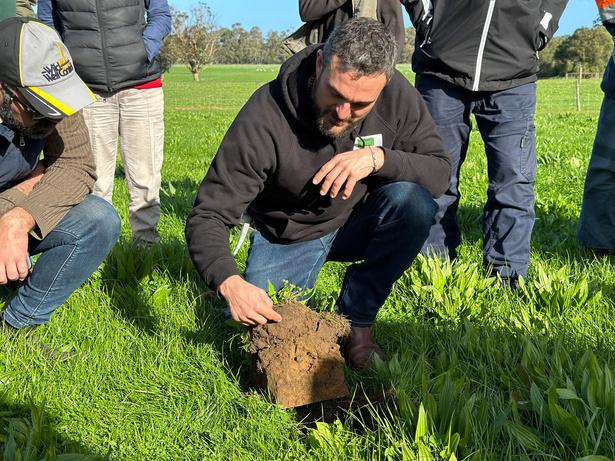

The optimal concentration range for the different nutrients within plants varies with species, parts, stages of growth and growing conditions
The balance between different nutrients and their interactions within plants also has a bearing on growth Nutrients are translocated via the xylem stream, from roots to shoots Along the way they may be deposited in roots, stems and leaves or transferred to phloem sap Some nutrients are more phloem mobile than others and can be readily partitioned to different plant part stored.
A range of plant testing methodologies can be used to identif nutrients and other characteristics such as sugar content, pH conductivity in different plant parts
Handheld Meters: Refractometers
Horiba LAQUAtwin Meters Spectrometers
Leaf Tissue Testing:


In tissue tests, the ash of whole leaves is analysed for nutrient content
All nutrients in the tissue and in the sap are recorded One issue with this is that nutrient deposits in the tissue from earlier growth may not correlate with the more immediate supply of nutrients, so there can be a lag of several weeks before deficiencies/toxicities show
Laboratory Plant Testing:
For a more detailed breakdown of plant nutritional status etc, it is common practice to send plant samples to a laboratory for tissue or sap analysis
Sap Analysis:
Plant sap analysis can be carried out to get a reading of different sap parameters at the time of sampling
It gives a fairly good indication of current nutrient supply, so issues can be picked up and addressed more immediately
Plant sap analysis hasn’t been around as long as tissue testing so reference levels for commercial crop species aren’t as well established
Things to consider when collecting plant material samples:
What plant parts you are testing
Accurate cross section/representation
Adequate volume of material
Weather conditions
Time of day
Handling & Storage

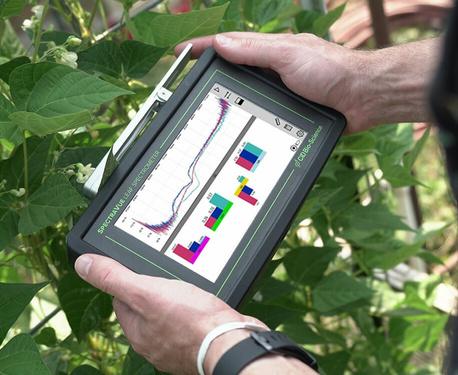


A fertiliser is a natural or synthesised substance containing chemical elements that is manufactured, represented, sold or used as a means to improve the growth and productiveness of plants
Inorganic nutrients are used for the production of synthetic fertilisers, and organic nutrients are derived from organic materials
Common Synthetic Fertilisers
Urea
Sulphate of Ammonia
Mono Ammonium Phosphate (MAP)
SuperPhosphate
Calcium Nitrate
Sulphate of Potash (SoP)
Mono Potassium Phosphate (MKP)
Magnesium Sulphate
Zinc Sulphate
Solubor
Common Organic Fertilisers
Manure based products
Fish hydrolysates
Blood and bone
Seaweed products
Compost
Fertiliser Fast Facts:
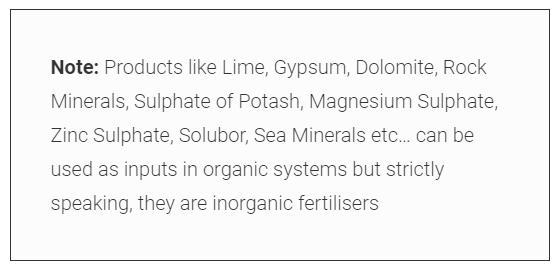


Solubility - Not all fertilisers are soluble in water The following rules of thumb are useful for determining the solubility of fertilisers, although there may be exceptions
All ammonium, nitrate, potassium, sodium and chloride salts are soluble
All oxides, hydroxides and carbonates are insoluble
All sulfates are soluble except for calcium sulfate
Form - Fertiliser products can be applied in dry or liquid form
Dry applied fertilisers: Dry granules | Pellets | Coarse minerals | Rock dusts
Can be broadcast, banded near crops or placed in planting furrows

Fertilisers applied as liquids: Soluble powders | Microfine suspension grade products
Soil drench, injected / dripped into planting furrows, through fertigation or in foliar sprays

Soil Nutrient Application
Consideration needs to be given to how to best apply the nutrients we need in our context.
Only applying soluble fertilisers in suitable conditions, when seasonal weather is less extreme
Using the right form of nutrients for the conditions (ie not applying dry fertilisers in dry conditions)
Negotiating a favourable balance of Carbon to Nitrogen in the soil to ensure the biology has both a source of energy and the nitrogen to make proteins
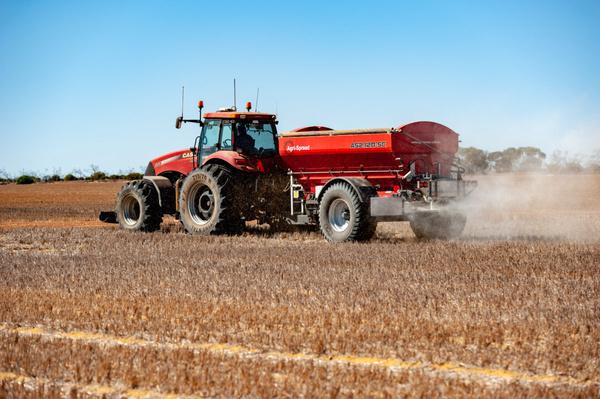
Targeting the placement of soil applications, especially immobile nutrients such as phosphorous, for better plant uptake minimal waste
Timing applications to foster delivery of the required nutrients to plants when they need them
Applying soluble fertilisers in lower amounts, more regularly or using slow release forms
Accounting for the poor uptake some soil applied nutrients (ie the trace elements)
Foliar Applied Nutrition

a means to get nutrients into the plant when soil delivery is compromised by adverse conditions efficient uptake of applied nutrients, so significantly lower quantities are needed rapid plant uptake to immediately address plant nutrient shortages, especially in leaves an effective way of getting trace elements into plants have to be applied more regularly can’t supply adequate quantities of macro nutrients involve post germination traffic don’t deliver plant immobile nutrients, that may be needed, to other parts of the plant besides the foliage ie the root zone don’t effectively supply nutrients that may be required in the soil environment


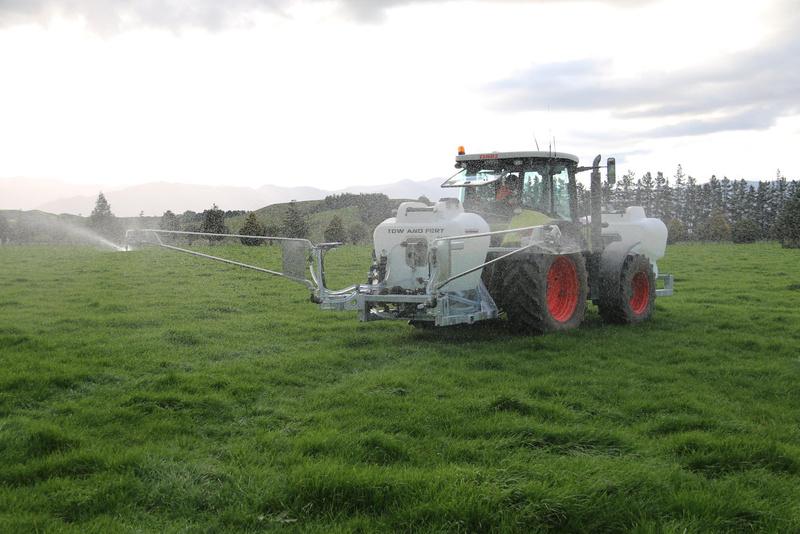
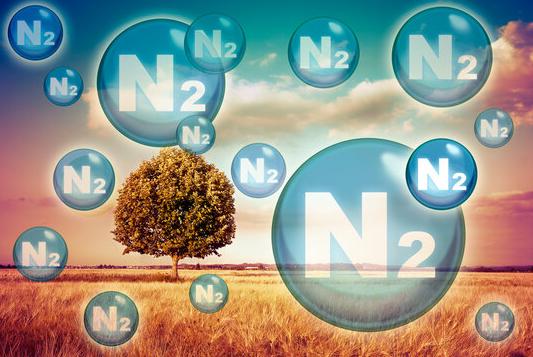

It takes lots of energy to convert nitrate to ammonia to the amino acids and proteins plants need There must be an adequate supply of carbohydrates to fuel these reactions
Certain nutrients are needed to make the enzymes involved in these conversion processes (ie Sulphur and Molybdenum are part of the nitrate reductase enzyme, Nickel is part of the Urease enzyme)
Other nutrients besides nitrogen are needed to assemble the full spectrum of necessary proteins ie Sulphur to form Methionine & Cysteine
We can save plants lots of energy by using less energy costly forms of nitrogen, providing an additional source of energy ie molasses, and ensuring that there is an adequate supply of the other nutrients required for efficient nitrogen conversion and protein formation
As soil biology largely determine structural properties and the availability, delivery and cycling of nutrients, we obviously want to minimize compromising and even promote biological activity with nutrient applications
Things that can be done:
Avoid burning soil microbiology with large applications of high salt fertilis
Buffer high salt fertilisers with humic substances to reduce harming biolo
Combine nutrients with biological foods, bio-stimulants, humic/fluvic compounds and chelating/complexing agents to encourage biological upta
Don’t place high analysis, soluble fertilisers near germinating seeds and fre roots, especially Nitrogen & Phosphorous, as they decommission biology
Consider substituting in furrow, planting applications of soluble fertilisers with mineral, organic, chelated/complexed fertilisers and/or foliar applications during establishment
Keep in mind, fertilization can have a positive effect on soil microbiology where soil is poor by improving plant growth which translates to more microbial food Microbes also need nutrients
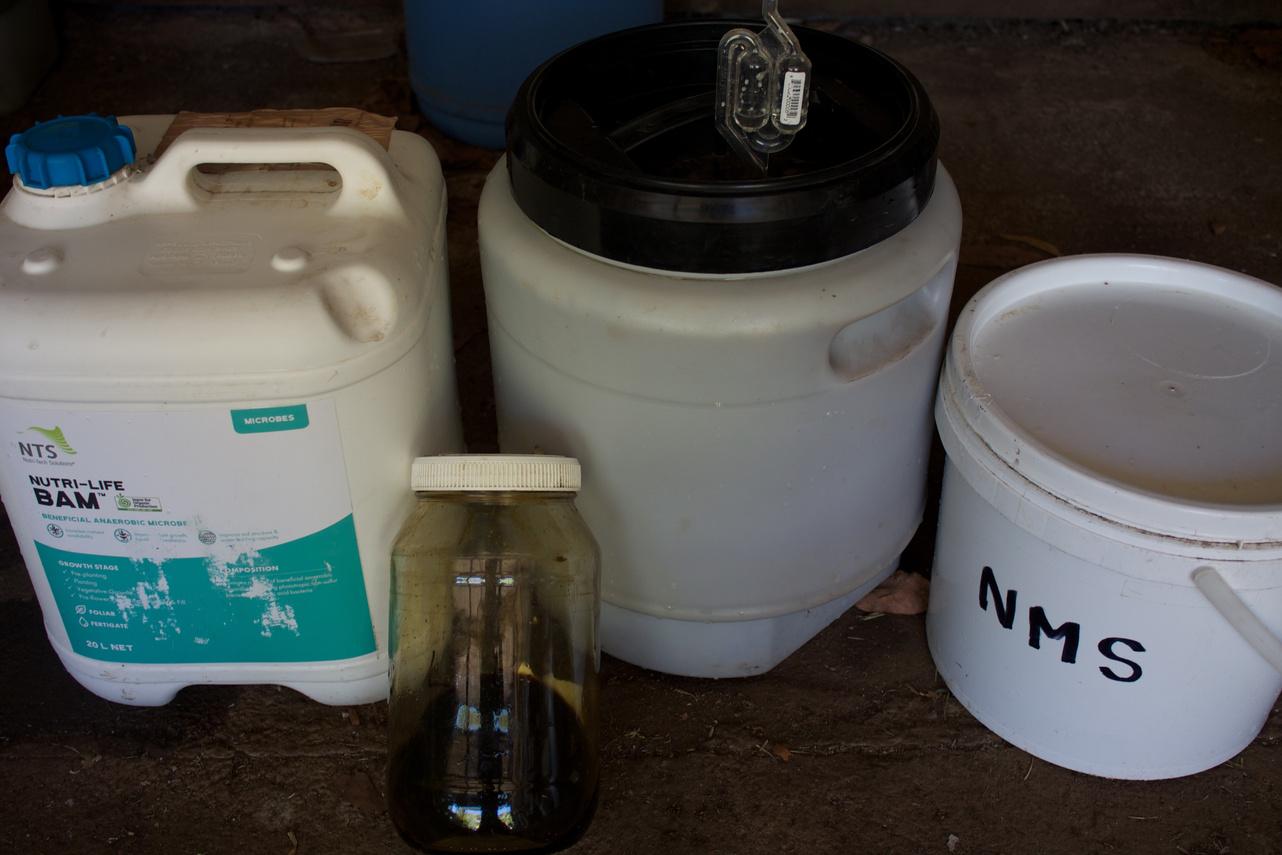
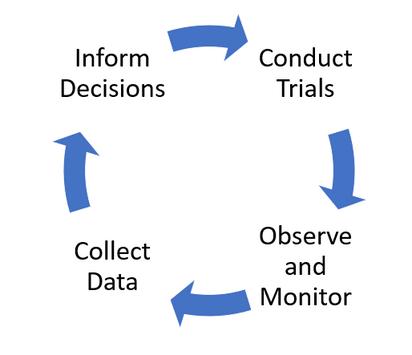
When introducing any new practice, it’s wise to try things on a small area first to get an idea of what’s involved and well they work
Side by side trials and analysis provide valuable information on the costs and benefit of fertiliser strategies
Once we are confident of the merit of certain fertiliser applications and familiar with their implementation, we can adopt them on a wider basis

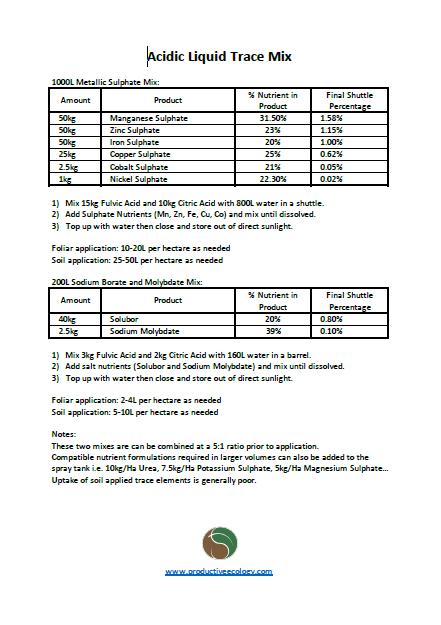

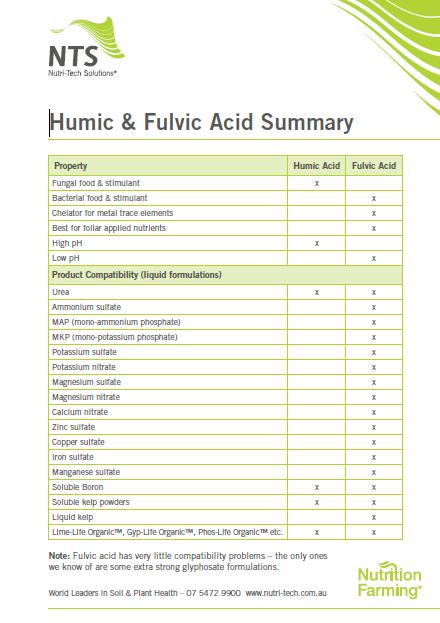
Recipes are downloadable from the full online article ‘Targeting Plant Nutrition’ To access please go to https://lowerblackwoodshorthandstoriescom/biostimulants-inagriculture/indexhtml
This document is a downloadable summary of the online article & content hub ‘Targeting Plant Nutrition’ The article was produced by 'Talkin' After Hours', the Lower Blackwood Landcare's Online Community & Information Hub, and written & collated by Mark Tupman from Productive Ecology
The aim of the article is to assist land managers in making making informed decisions around the use of fertilisers for soil and plant nutrition


The development of this article was funded through Soil Wise Soil Wise is funded by the National Landcare Program Smart Farms Small Grants – an Australian Government initiative. It is supported by Healthy Estuaries WA – a State Government program

